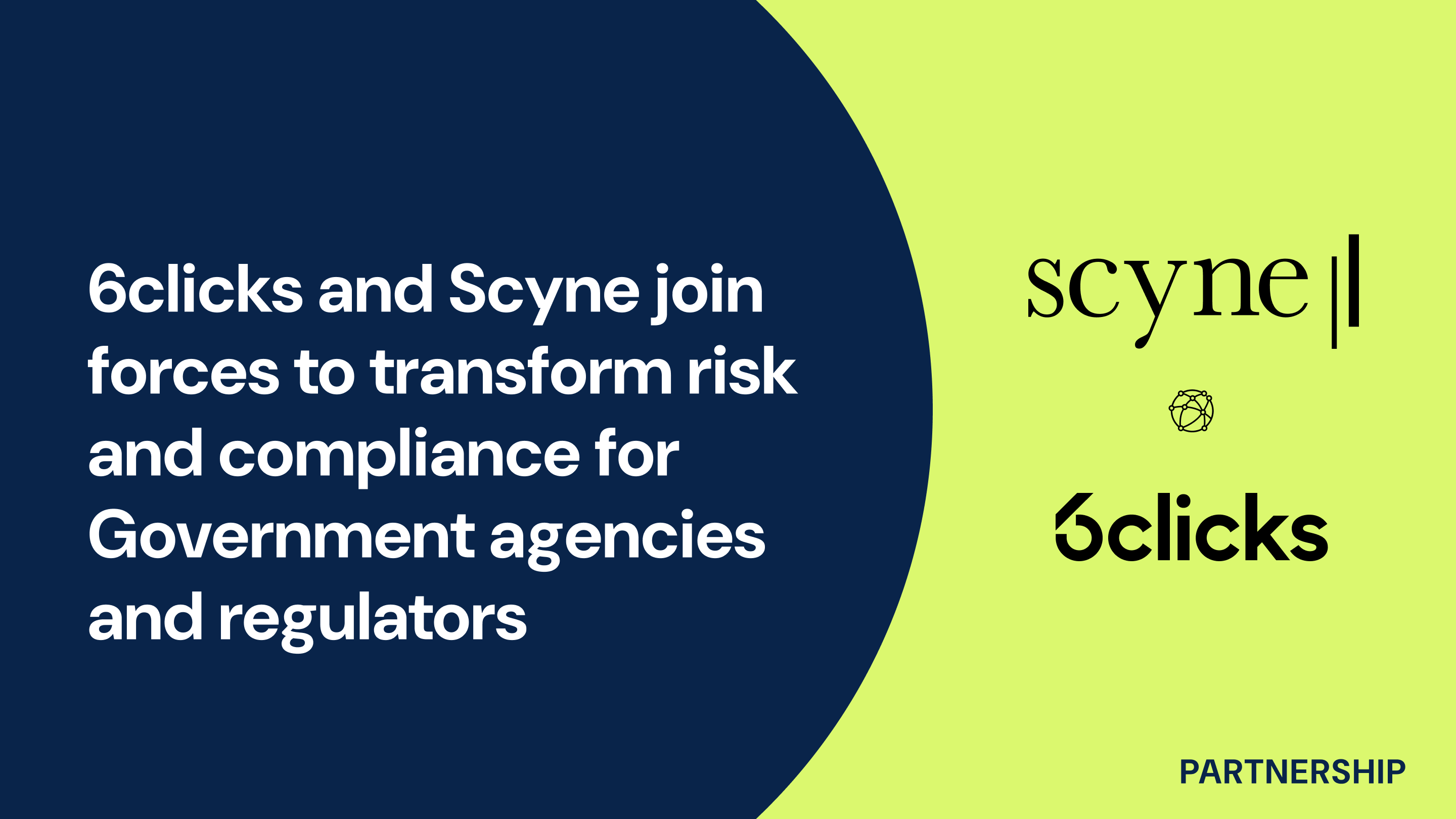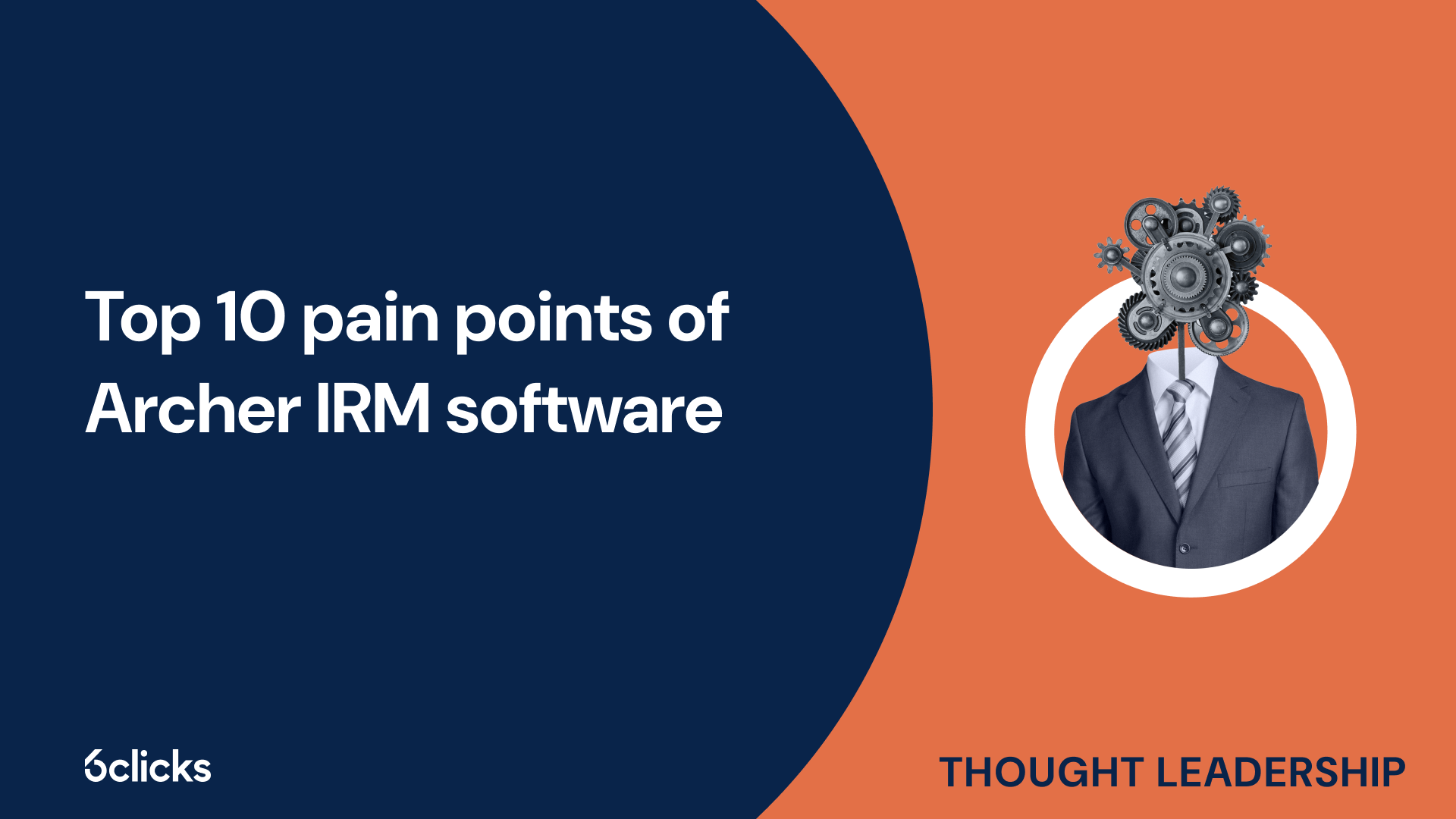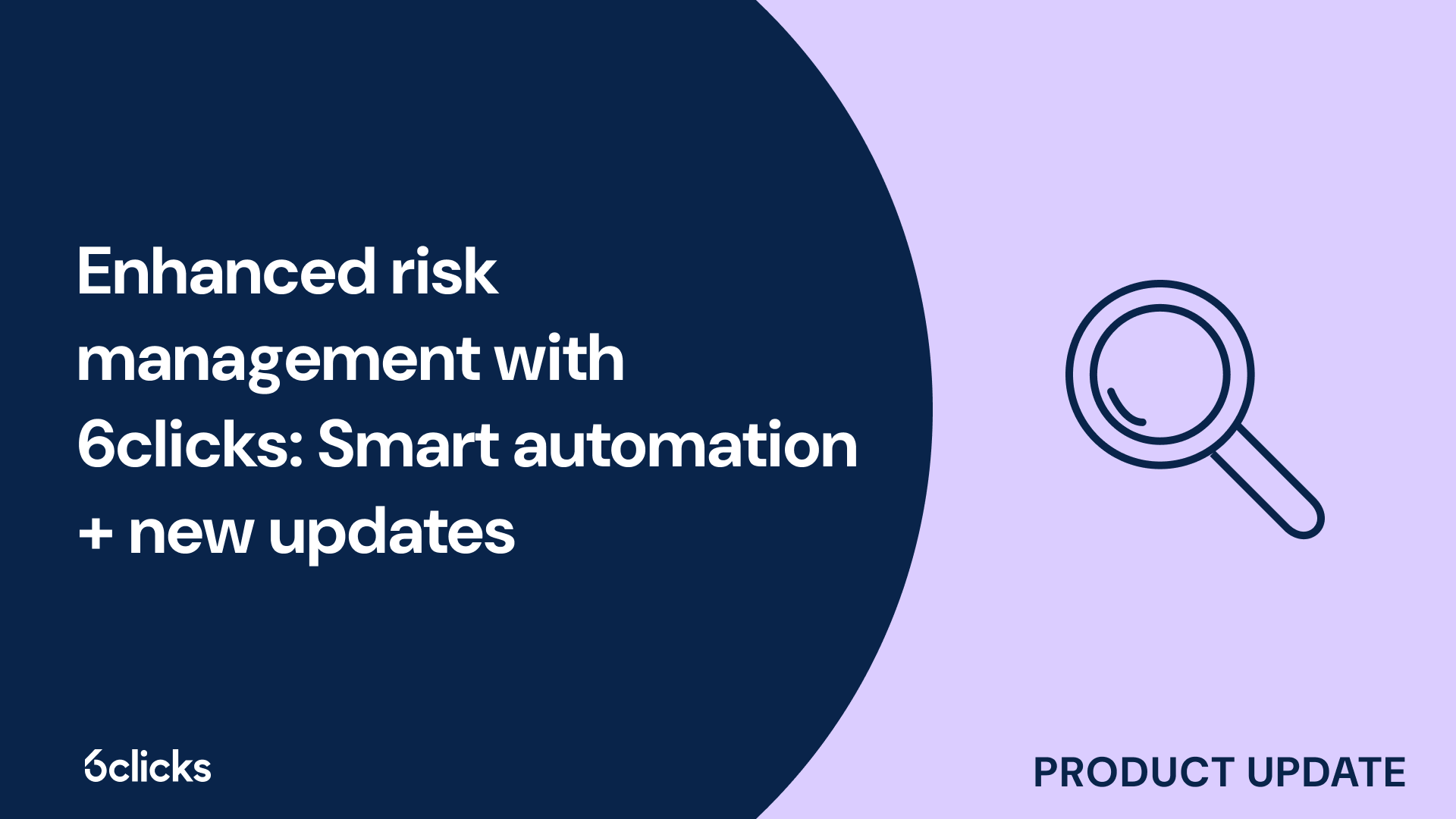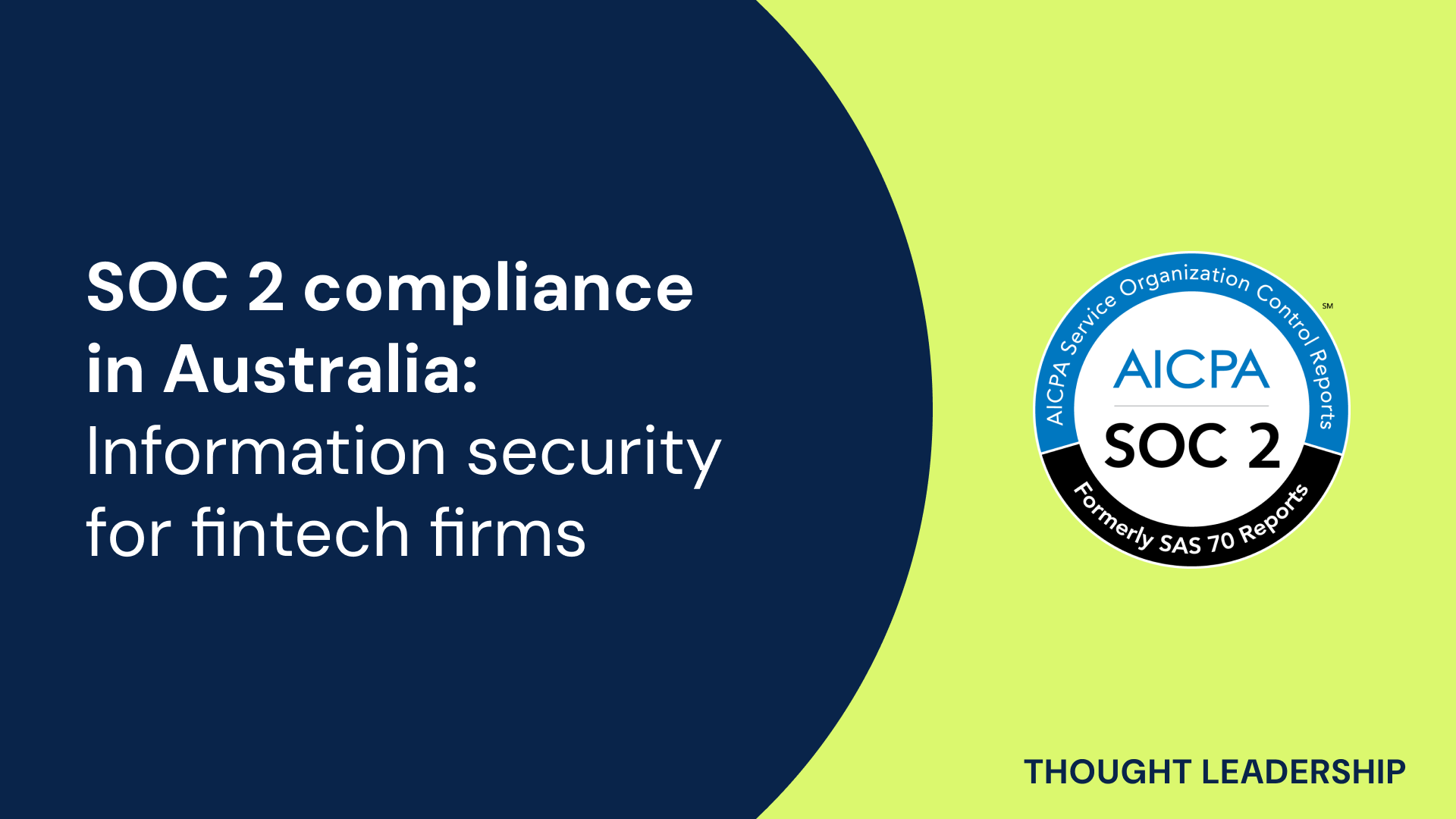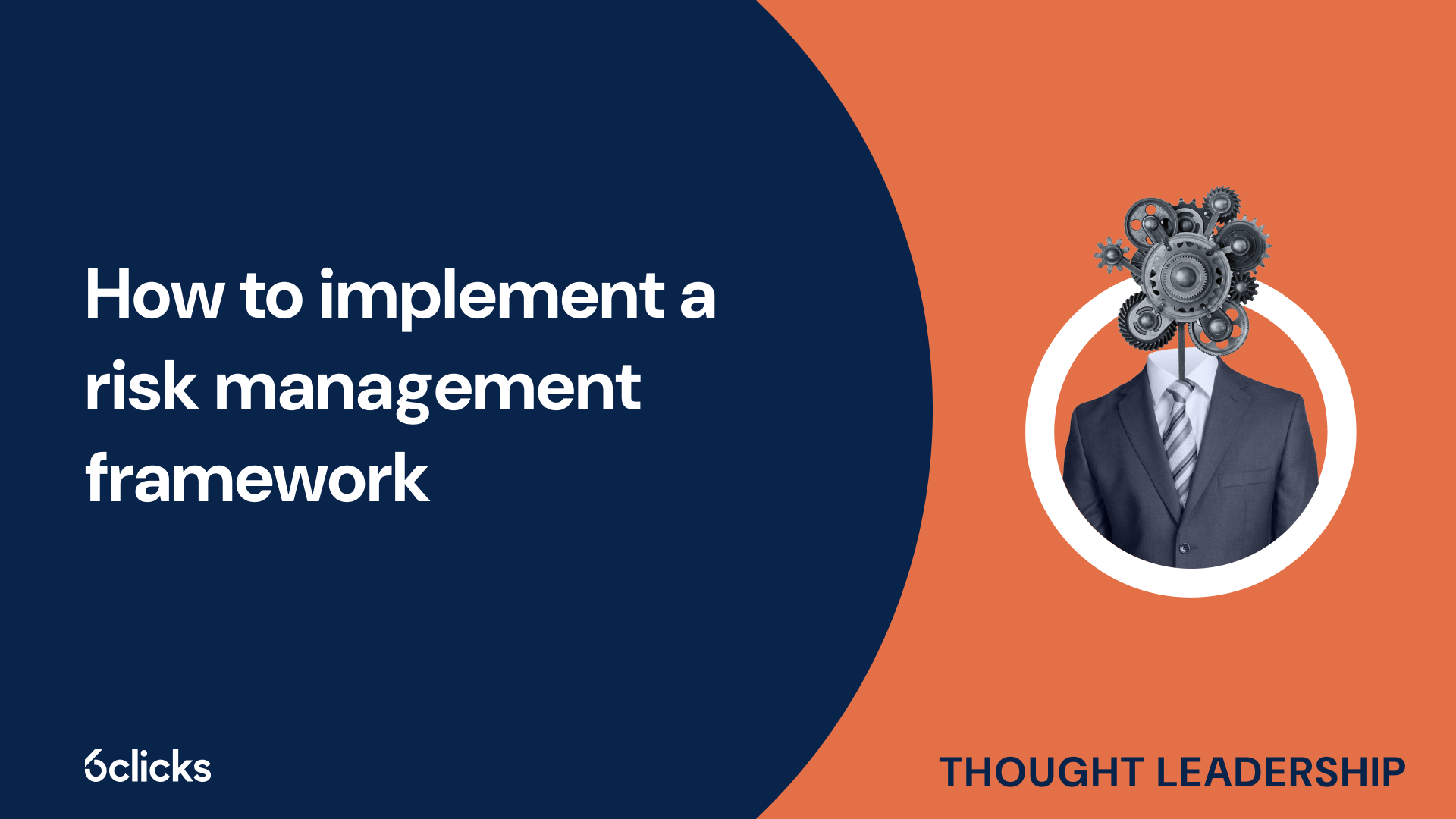Third-Party Risk Management Expert Guide
Get the Third-Party Risk Management Expert Guide to master vendor risk strategies, improve compliance, and safeguard your business. Download now!
-1.png?width=200&height=249&name=Group%20193%20(1)-1.png)
Third-Party Risk Management Expert Guide
What is a vendor risk manager?
A vendor risk manager plays a crucial role in maintaining a comprehensive vendor risk management program within an organization. In today's interconnected business landscape, organizations rely on various third-party vendors for a wide range of services. However, these relationships also come with potential risks, such as financial, operational, cybersecurity, reputational, and regulatory. The vendor risk manager is responsible for identifying and assessing these risks and implementing strategies to mitigate them effectively. By implementing a robust vendor risk management process, organizations can minimize the risk exposure and ensure that their vendor relationships align with industry standards and regulatory requirements.
Heading: Vendor Risk Assessment and Management
One of the primary responsibilities of a vendor risk manager is to conduct thorough vendor risk assessments. This process involves evaluating potential vendors based on their risk profile and assessing their ability to meet the organization's security requirements, regulatory compliance, and business continuity plans. By utilizing vendor risk management software and following a structured vendor assessment process, the risk manager can effectively evaluate potential risks associated with vendor relationships and make informed decisions regarding vendor selection or termination. Continuous monitoring of vendors and ongoing risk assessments are also crucial to identify any changes or new risks that may arise throughout the vendor relationship.
Heading: Third-Party Risk Mitigation
A vendor risk manager works closely with various teams within the organization, including the legal team, security team, and board of directors, to develop and implement strategies for mitigating third-party risks. This includes negotiating contracts and service-level agreements that clearly outline the responsibilities and expectations from both parties. The risk manager also collaborates with the IT and cybersecurity teams to ensure that the necessary security measures are in place to protect the organization from potential security breaches or supply chain attacks. Additionally, the vendor risk manager establishes key performance indicators (KPIs) and monitors the performance of vendors to ensure they meet the required standards and regulatory compliance.
Heading: Compliance and Regulatory Requirements
Compliance with industry standards and regulatory requirements is a critical aspect of vendor risk management. The vendor risk manager stays updated on the changing regulatory landscape and ensures that the vendor relationships and processes align with the relevant regulations. This includes assessing vendors' financial statements, verifying their compliance with legal and regulatory requirements, and conducting due diligence to identify any potential red flags. By adhering to regulatory requirements, the organization can minimize the risk of legal issues and reputational damage.
Heading: Strategic Vendor Relationship Management
In addition to assessing and mitigating risks, a vendor risk manager also plays a role in developing and maintaining strong vendor relationships. This involves fostering open communication, addressing any concerns or issues promptly, and working collaboratively to ensure that the vendor's objectives align with the organization's goals. Building a strategic vendor relationship not only reduces potential risks but also allows for mutually beneficial partnerships that can contribute to the organization's success.
A vendor risk manager is a crucial role within an organization to effectively manage the risks associated with third-party vendors. By conducting comprehensive risk assessments, implementing mitigation strategies, ensuring compliance, and fostering strong vendor relationships, the risk manager helps the organization mitigate potential risks and build resilient vendor partnerships. In an ever-evolving business landscape, a well-established vendor risk management program led by a skilled risk manager is essential for protecting the organization's financial stability, reputation, and security.
Overview of vendor risk management
Vendor risk management is a crucial process undertaken by organizations to identify, assess, and mitigate the potential risks associated with their third-party vendors. Its primary purpose is to ensure that these relationships align with industry standards, regulatory requirements, and the organization's risk appetite. By implementing an effective vendor risk management program, organizations can minimize their exposure to financial, operational, cybersecurity, reputational, and regulatory risks.
The key elements and processes involved in vendor risk management include vendor selection, contract management, risk assessment, and ongoing monitoring. During vendor selection, organizations evaluate potential vendors based on their risk profile, financial stability, and ability to meet security requirements and regulatory compliance. Contract management involves negotiating and documenting the responsibilities and expectations of both parties.
Risk assessment is a critical component of vendor risk management, as it involves identifying and evaluating potential risks associated with vendor relationships. This includes considering factors such as the vendor's cybersecurity measures, operational reliability, and adherence to industry regulations. Ongoing monitoring ensures that vendors continue to meet the required standards and regulatory compliance throughout the relationship.
An effective vendor risk management program requires accurate vendor data, standardized processes, and mitigation plans. Accurate vendor data provides a foundation for risk assessments, while standardized processes ensure consistency in evaluating and managing vendor risks. Mitigation plans outline strategies for addressing identified risks, such as implementing additional security measures or diversifying vendor relationships.
Responsibilities of a vendor risk manager
A vendor risk manager plays a crucial role in a company's vendor risk management program by overseeing and managing the risks associated with third-party relationships. Their responsibilities encompass various tasks, including vendor selection, risk assessment, contract management, and ongoing monitoring. They collaborate with different stakeholders such as the legal team, board of directors, and IT department to ensure compliance with industry standards and regulatory requirements. The vendor risk manager is responsible for evaluating potential vendors based on their risk profile, financial stability, cybersecurity measures, and ability to meet security and regulatory requirements. They also conduct risk assessments to identify and evaluate potential risks associated with vendor relationships, ensuring that vendors adhere to industry regulations and maintain operational reliability. By employing effective vendor risk management strategies, the vendor risk manager helps mitigate potential risks, protect the company's reputation, and maintain business continuity.
Assessing and identifying potential risks
In a vendor risk management program, assessing and identifying potential risks is a crucial step in mitigating any potential financial, operational, or reputational risks to the organization. This involves evaluating various risk factors associated with vendor relationships, such as operational risk, supplier website access and permissions, decentralized systems and service providers, distribution of suppliers, and supplier financial and performance risks.
Operational risk refers to the potential for disruptions or errors in the delivery of products or services by vendors, which can impact the organization's operations. Evaluating supplier website access and permissions ensures that vendors have appropriate security measures in place to protect sensitive data and prevent unauthorized access.
Decentralized systems and service providers can introduce additional risks as they may not adhere to the same standards and controls as the organization. Assessing the distribution of suppliers helps identify potential concentration risks, where the organization may become overly dependent on a single vendor or a few key suppliers.
Evaluating supplier financial and performance risks is essential to ensure that vendors are financially stable and have a track record of meeting performance expectations. This assessment helps mitigate potential disruptions that could arise from a vendor's financial instability or subpar performance.
By assessing and identifying these potential risks, organizations can make informed decisions about vendor relationships and develop effective mitigation strategies. Regular risk assessments should be conducted to review existing vendor relationships and anticipate risks related to new vendors or changing business needs. This ongoing monitoring and evaluation ensure that the organization stays proactive in managing vendor-related risks and aligns with regulatory requirements and industry standards.
Developing and implementing policies and procedures
Developing and implementing policies and procedures for vendor risk management is a crucial aspect of an effective risk management program. These policies and procedures provide a framework for identifying, assessing, and mitigating risks associated with vendors and third-party relationships.
To begin the process, organizations should first establish a clear set of objectives and goals for vendor risk management. This includes defining the scope of the program, identifying the types of risks to be assessed, and determining the desired risk tolerance level.
Next, organizations need to align their policies and procedures with relevant security frameworks such as HIPAA, NIST, and GDPR. These frameworks provide guidelines and best practices for data privacy, security, and compliance. By aligning their vendor risk management policies with these frameworks, organizations ensure that their vendors adhere to the same security standards and controls.
Once the policies and procedures are defined and aligned, the next step is implementation. This involves iterative processes to continuously improve and refine the policies and procedures. Organizations should regularly review and update their policies to address emerging threats, new security issues, and regulatory changes.
Addressing security issues is another critical step in the implementation process. This entails conducting comprehensive security assessments of vendors to identify potential vulnerabilities and weaknesses. Organizations should work closely with their vendors to address any identified issues and ensure that appropriate measures are implemented to mitigate these risks.
Furthermore, organizations should strive to reduce risk exposure by categorizing vendors into risk tiers based on the level of risk they pose. This is typically done through a vendor inventory process, where vendors are classified based on their importance, criticality, and potential impact on the organization. High-risk vendors require closer monitoring and more rigorous assessments, while low-risk vendors may require less oversight.
Creating and managing vendor risk management programs
Creating and managing a vendor risk management program involves several steps to ensure effective risk mitigation and compliance.
The first step is selecting appropriate software that aligns with the organization's needs and requirements. This software should facilitate the entire vendor risk management process, from assessments to monitoring and reporting.
Next, the team responsible for vendor risk management should undergo comprehensive training on the program's objectives, guidelines, and best practices. This training ensures that all team members have a thorough understanding of their roles and responsibilities in the program.
Building a vendor inventory is crucial, as it helps identify and categorize vendors based on their importance, criticality, and potential impact on the organization. This inventory serves as a foundation for prioritizing risk assessments and ongoing monitoring activities.
Vendor classification is essential in determining the level of risk each vendor poses. By classifying vendors into risk tiers, organizations can allocate resources effectively and focus on high-risk vendors that require closer scrutiny.
Selecting an assessment framework is crucial for evaluating vendor risks consistently. Organizations should choose a framework aligned with industry standards and regulatory requirements, such as ISO 27001 or SOC 2.
Developing an assessment methodology ensures a systematic and consistent approach to evaluating vendors. This methodology should outline the process, criteria, and scoring mechanism for assessing vendor risks.
Defining the risk methodology and control framework establishes the organization's risk tolerance level and the control measures required to mitigate risks effectively. This framework should align with the organization's overall risk management strategy.
Creating automation workflows and triggers streamlines the vendor risk management process. Automation can help with vendor onboarding, assessments, monitoring, and alerting for any deviations or breaches.
Building reports and dashboards provides stakeholders, including the board of directors and the legal team, with real-time visibility into vendor risks. These reports and dashboards should provide comprehensive insights and enable informed decision-making.
Evaluating potential vendors and suppliers
Evaluating potential vendors and suppliers is a crucial step in managing vendor risk. It ensures that organizations select reliable partners who can meet their needs without introducing unnecessary risks. There are several key factors to consider when evaluating potential vendors.
First and foremost, assessing the risk potential of vendors is essential. This involves evaluating factors such as their financial stability, operational capabilities, and history of regulatory compliance. By assessing these factors, organizations can determine the likelihood of vendors causing disruptions or not meeting contractual obligations.
Reputational risk is another important consideration. Organizations should research the vendor's reputation in the industry and assess any potential negative impacts their association could have on their own reputation. This includes looking into past controversies, customer feedback, and media coverage.
Financial risk should also be evaluated. This involves analyzing the vendor's financial statements, profitability, liquidity, and overall financial health. Assessing financial risk helps mitigate the possibility of selecting a financially unstable vendor that may struggle to deliver goods or services as agreed.
To mitigate vendor risk, organizations should conduct thorough risk assessments. This involves evaluating vendors against specific criteria, such as their risk potential, reputation, and financial performance. The assessment process should be consistent and based on industry standards and best practices.
Additionally, organizations should prioritize high-risk vendors for closer scrutiny. By allocating resources effectively, organizations can focus on vendors that pose the most significant risks and implement appropriate risk mitigation strategies.
Negotiating service level agreements (SLAs) with third-party vendors
In vendor risk management, negotiating service level agreements (SLAs) with third-party vendors is vital for several reasons. SLAs are contractual agreements that outline the level of service and performance expectations between the organization and the vendor. Here's why SLAs are important in vendor risk management.
Firstly, SLAs allow organizations to establish clear expectations regarding the services or products provided by the vendor. This ensures that both parties are on the same page and helps prevent misunderstandings or disputes in the future. By clearly defining the scope, quality, and timeliness of deliverables, SLAs minimize the risk of potential disruptions or failures.
Secondly, SLAs enable organizations to tailor the contracts to the specific vendor and the unique relationships they share. Not all vendors will have the same capabilities, resources, or risk profiles. By customizing SLAs, organizations can address specific concerns relating to the vendor's performance, security, or compliance requirements.
Moreover, contracts play a pivotal role in outlining compliance expectations. SLAs can include provisions that ensure the vendor complies with industry regulations, security protocols, or privacy standards. By defining these expectations in the contract, organizations can better manage and monitor the vendor's adherence to these requirements, reducing regulatory and legal risks.
Lastly, contracts enable effective contract management and regular review. SLAs should include provisions for ongoing monitoring and reporting to gauge the vendor's performance against the agreed-upon targets. Regular reviews help identify any deviations, allowing organizations to take corrective actions promptly.
Monitoring changes in regulatory requirements
Monitoring changes in regulatory requirements is crucial for effective vendor risk management. Regulatory requirements are continuously evolving, and keeping up with these changes helps organizations identify and mitigate potential risks while maintaining compliance.
Staying updated with the latest regulations allows vendor risk managers to stay informed about any new obligations or standards that need to be incorporated into their risk management processes. This ensures that all vendor relationships are in line with current regulatory expectations, reducing the risk of fines, sanctions, or reputational damage.
To monitor changes in regulatory requirements, vendor risk managers should conduct regular reviews of relevant guidelines issued by regulatory bodies. This helps them identify any updates or additions that impact vendor risk management practices. Additionally, attending industry conferences and networking events provides valuable opportunities to learn about emerging regulations and best practices from industry experts.
Subscribing to regulatory updates or newsletters is another effective way to stay informed about any changes in requirements or expectations. This ensures that vendor risk managers receive real-time notifications and can modify their risk management strategies accordingly.
By actively monitoring changes in regulatory requirements, organizations can proactively address potential risks, maintain compliance, and foster strong vendor relationships within a constantly evolving regulatory landscape.
Performing regular assessments of third-party vendors
Performing regular assessments of third-party vendors is vital for an effective vendor risk management program. These assessments help organizations evaluate the potential risks associated with their vendor relationships and ensure that vendors meet necessary security and compliance standards. There are several factors that should be considered during the assessment process:
- Reputation: Assessing a vendor's reputation helps organizations gauge the vendor's reliability, trustworthiness, and overall track record in the industry. This includes evaluating their past performance, customer feedback, and reputation for ethical practices.
- Compliance: It is essential to assess a vendor's compliance with industry regulations and legal requirements. This includes evaluating their adherence to data protection laws, privacy regulations, and any other relevant compliance standards.
- Information and Data Security: Evaluating a vendor's information and data security measures is crucial to protect sensitive information. This includes assessing their procedures for data handling, encryption, access control, and incident response.
- Physical and Data Center Security: Organizations should assess the physical security measures in place at a vendor's facilities. This includes evaluating their access controls, video surveillance, security systems, and disaster recovery plans.
- Infrastructure Security: Assessing a vendor's infrastructure security measures helps ensure that their networks, servers, and systems are adequately protected against unauthorized access, breaches, and cyber threats.
- Web Application Security: Evaluating a vendor's web application security measures is crucial to prevent potential vulnerabilities and protect against cyber-attacks. This includes assessing their secure coding practices, vulnerability scanning, and application testing.
By regularly assessing these factors, organizations can effectively manage the risks associated with their third-party vendors and maintain a secure business relationship.
Keeping up to date with the latest cybersecurity trends
Keeping up to date with the latest cybersecurity trends is of utmost importance for a vendor risk manager. In today's digital landscape, where cyber threats are constantly evolving, staying informed about emerging trends is crucial to effectively manage vendor risks.
Failing to stay updated on cybersecurity trends can lead to potential risks and severe consequences for organizations. One such risk is the increasing prevalence of ransomware attacks, where cybercriminals encrypt critical data and demand a ransom to release it. Without knowledge of the latest ransomware techniques and mitigation strategies, a vendor risk manager may not be able to adequately assess the risk exposure and implement appropriate controls.
Another significant risk is malware, which can infiltrate a vendor's systems and compromise the organization's sensitive information. By staying informed about the latest malware variants and attack vectors, a vendor risk manager can proactively assess the security measures in place and address any vulnerabilities.
Phishing attacks, where cybercriminals trick individuals into revealing sensitive information, pose another significant risk. By staying updated on the latest phishing techniques, a vendor risk manager can enhance vendor assessments and promote awareness among employees and vendors to prevent phishing incidents.
Lastly, insider threats, where employees or trusted individuals intentionally or unintentionally compromise data security, can have severe consequences. Staying informed about emerging insider threat trends helps a vendor risk manager identify potential red flags and implement effective controls to mitigate this risk.
Qualifications needed to be a vendor risk manager
Becoming a successful vendor risk manager requires a specific set of skills and qualifications. Firstly, a strong background in risk management is essential. This includes a deep understanding of vendor risk management programs and third-party risk management practices. Having knowledge of financial risks, operational risks, and cybersecurity risks is crucial for assessing and mitigating potential risks. Additionally, a vendor risk manager should possess excellent analytical and problem-solving skills to identify and evaluate risk exposures accurately. Regulatory compliance expertise is also necessary to ensure adherence to legal requirements and industry standards. Excellent communication and relationship-building skills are essential for effectively managing vendor relationships and conducting vendor assessments. Technological proficiency is also beneficial, especially in using vendor risk management software and tools for continuous monitoring. A vendor risk manager should stay updated on the latest security breaches and threat landscapes to effectively protect the organization. Overall, a combination of risk management knowledge, analytical skills, compliance expertise, communication abilities, and technological proficiency is crucial for success in this role.
Educational qualifications
Educational qualifications play a crucial role in becoming a successful vendor risk manager. This role requires a combination of knowledge in business and risk management practices. Typically, a Bachelor's Degree in Business or a related field is necessary to enter this field.
A solid educational foundation in areas such as finance, accounting, or supply chain management provides a strong base for understanding vendor relationships and potential risks. Additionally, courses in risk management or cybersecurity offer valuable insights into identifying and mitigating financial, operational, and reputational risks associated with third-party vendors.
While educational qualifications are important, they should also be complemented with relevant work experience. To be considered competitive for vendor risk management positions, a minimum of 2 years of related work experience in vendor management or vendor risk management is typically required. This experience allows individuals to understand the intricacies of managing vendor relationships, conducting risk assessments, and implementing effective risk management strategies.
By combining the right educational qualifications with relevant work experience, individuals can position themselves as qualified vendor risk managers, equipped to assess and manage potential risks associated with vendors, ensure regulatory compliance, and safeguard the organization's reputation and financial well-being.
Professional experience
To be a vendor risk manager, a combination of educational qualifications and professional experience is crucial. Minimum educational qualifications typically include a bachelor's degree in finance, accounting, supply chain management, or a related field. However, advanced degrees such as a Master's in Business Administration (MBA) or a Certified Risk Management Professional (CRMP) certification may enhance an individual's chances of securing this role.
In terms of professional experience, a minimum of 2 years of related work experience in vendor management or vendor risk management is generally required. This experience allows individuals to gain a deep understanding of managing vendor relationships, conducting comprehensive risk assessments, and implementing effective risk management strategies.
Having experience in areas such as risk assessment, vendor management, regulatory compliance, and cybersecurity is crucial for a vendor risk manager. This experience enables professionals to identify and mitigate various risks, including financial, operational, reputational, and cybersecurity risks. Additionally, familiarity with regulatory requirements ensures compliance with industry standards and legal obligations.
Key skills and knowledge necessary for this role include strong analytical abilities, effective communication skills, attention to detail, and the ability to manage multiple vendor relationships simultaneously. Proficiency in risk assessment methodologies and vendor risk management software is also vital for efficiently evaluating risk profiles and monitoring ongoing vendor performance.
Challenges faced by vendor risk managers
Vendor risk managers face several challenges when managing vendor risk. One of the primary difficulties they encounter is assessing and mitigating risks effectively. This involves identifying potential risks associated with vendor relationships, such as financial, operational, reputational, and cybersecurity risks. It requires a deep understanding of the vendor's business operations, industry regulations, and potential vulnerabilities that may impact the organization.
Tracking vendor performance and compliance is another major challenge. Vendor risk managers need to ensure that vendors are meeting contractual obligations, adhering to regulatory requirements, and maintaining the necessary security measures. This requires continuous monitoring and evaluation of vendor activities, which can be time-consuming and resource-intensive.
Coordinating internal resources is also essential for prioritizing high and critical threats. Vendor risk managers must work closely with various stakeholders, such as the legal team, IT department, and board of directors, to establish clear communication channels and escalation processes. Lack of communication and coordination can lead to misalignment of priorities and hinder the timely identification and mitigation of risks.



